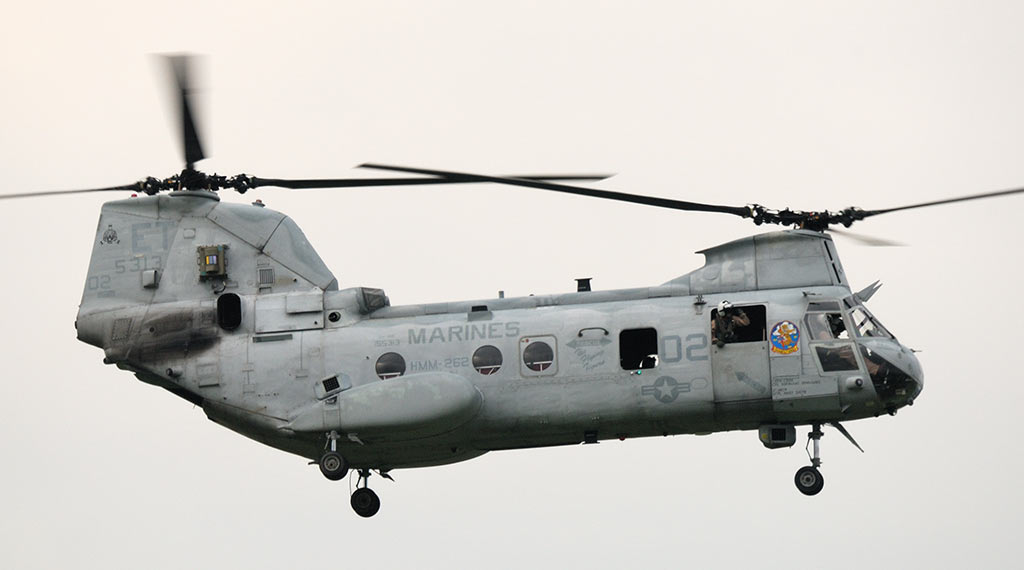
The U.S. Marines, particularly its presence on Okinawa, has often seemed the bellwether of the Japan-U.S. defense relationship. And it’s usually been problematic. But recently, there was good news involving the Marines.
At the “2+2 Meeting” of top Japanese and American defense and foreign affairs officials in Washington on Jan. 11, it was agreed that the 12th Marine Regiment will remain on Okinawa and be converted into the 12th Marine Littoral Regiment (MLR) by 2025.
“Littoral”? That’s a unit capable of deploying small detachments of Marines to “austere, remote islands” from which they conduct surveillance and launch anti-ship missiles at enemy ships. In this case, People’s Liberation Army Navy (PLAN) ships. The Marines will also have some anti-air capability.
One thought the Marines already knew how to do this sort of thing. The Marine Corps hymn mentions fighting in “every clime and place.” But that’s a question for another day.
According to The Washington Post, unnamed U.S. officials described the MLR “deal” as one of the most significant advances in U.S. force posture in the region in at least a decade.
It isn’t. But it is useful and it is important.
Here’s why:
Operational Benefits
It appears the MLR will deploy throughout the Nansei Shoto. Also known as the Ryukyus, this is the chain of islands extending from Kyushu—Japan’s southernmost main island—and almost to Taiwan. The Japan Ground Self-Defense Force (GSDF) has positioned intelligence, missile, and anti-aircraft units along the chain in recent years, and plans to add more. The Marines add additional surveillance resources and firepower—as well as troops to help deal with enemy raiders.
So Chinese ships and aircraft coming within range of both U.S. and Japanese missile batteries on the Nansei Shoto will need to tread carefully—both in peacetime and wartime. Think of China’s People’s Liberation Army (PLA) putting something like an MLR on a series of islands; say, like the Chinese have done on man-made islands in the South China Sea.
The U.S. Navy and Air Force will either avoid the area—or else have to eliminate the threat.
Does the MLR Deployment Deter China From Attacking Taiwan?
No. But from Yonaguni, the westernmost Nansei Shoto island, it is only 60 miles from Taiwan. Marine (and Japanese) missiles can reach northern Taiwan and nearby waters. This threatens the northern flank of a Chinese invasion force. Indeed, a well-defended Nansei Shoto barrier severely restricts the PLA’s broader movements by the “northern wing” of an assault force.
However, the MLR’s existing and soon-to-be-acquired missiles are relatively short-range (100-plus miles). Longer-range weapons would increase MLR (and GSDF) effectiveness.
Also, keep in mind that the Nansei Shoto barrier—and any MLR units—can be outflanked or leapfrogged, or penetrated by brute force. They are just one part of a more complex defense problem.
Finally, Becoming Real Partners
The Marines training and operating throughout the Nansei Shoto is a “first.” Until now, the Marines have mostly been confined to the main island of Okinawa. Training areas are limited and there are severe limits on the kinds of training that can be done. This is in part to avoid provoking a well-oiled protest crowd—some of it looking for central government cash, some of it unhinged leftists (many from elsewhere), some of it egged on by China, and some of it principled opposition.
The expanded training and exercise opportunities are essential for maintaining warfighting skills. They also allow the Marines to operate where they likely will have to fight. And fighting on familiar terrain is always an advantage. This is all moving in the right direction—away from the restrictions that have effectively required the Marines to leave Japan to train in order to defend Japan.
But there’s more benefit. The MLR and its deployed units will need to operate closely with the GSDF—and probably with the Maritime and Air Self-Defense Forces. Progress has been made in recent years, but more needs to be done.
And there’s the psychological benefit that comes from both sides carrying out a common mission together. You increasingly see the other guys as useful partners and equals.
And perhaps the MLR effort will serve as a catalyst for making the entire Nansei Shoto defense a combined effort between all Japanese and U.S. services (not just the Marines and GSDF)—to include a standing joint headquarters overseeing operations. The more the Americans and Japanese are a “single force,” the more effective they’ll be in a fight against the Chinese regime. Beijing hates it when its self-declared adversaries link up to resist.
There’s also a national-level political angle to the Japanese government granting “approval” for the revamped 12th Marines to stay on Okinawa and operate more widely. Until recently, Tokyo would have rejected such a request. But these days, it appears Japan’s rulers are more afraid of the Chinese than of domestic critics—of whom there are fewer than ever.
More Than the MLR
While the MLR announcement got the main coverage, the official 2+2 statement includes more importance than the MLR. These statements usually read like Hallmark Greeting cards. However, this one is different. It mentions specifics and lays out existing shortcomings in defense capabilities—particularly in the bilateral command and control areas, where there is nearly no capability. And it calls for correcting them.
In other words, an effective bilateral defense between the Japanese and the Americans is now conceivable. A few years ago, the handwringing from the Japanese side and the timidity and/or lack of interest on the U.S. side would have made this impossible.
Now, all it takes is some will and some imagination. And it seems there are a few people around who have both.
- Newsham Breaks Down Latest China–Japan Standoff Near Senkakus Islands - December 4, 2025
- China’s Act of War Against PM Takaichi and Japan - November 24, 2025
- Panel Discussion: Are H-1B Visa Holders Replacing US Workers? - November 18, 2025
